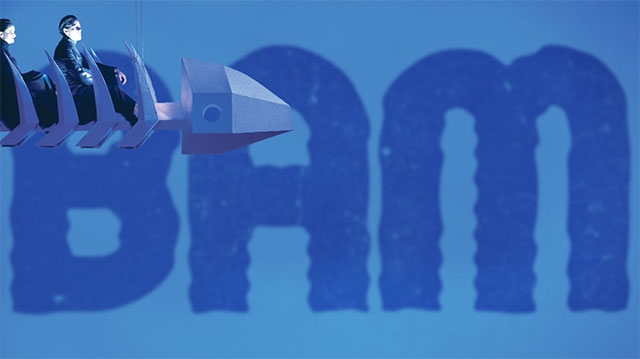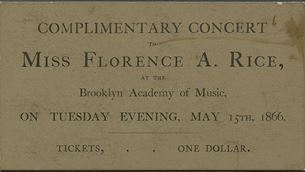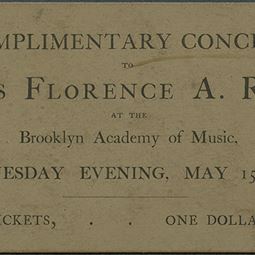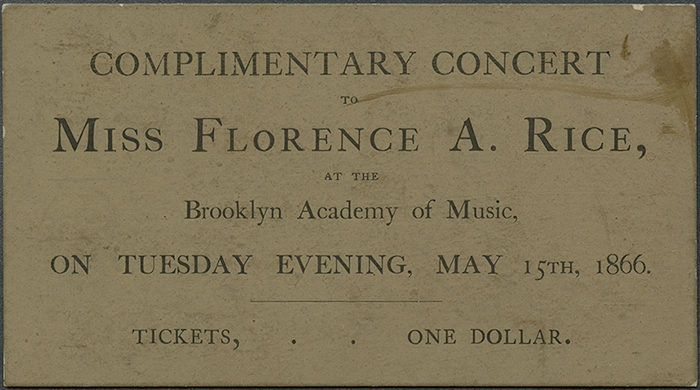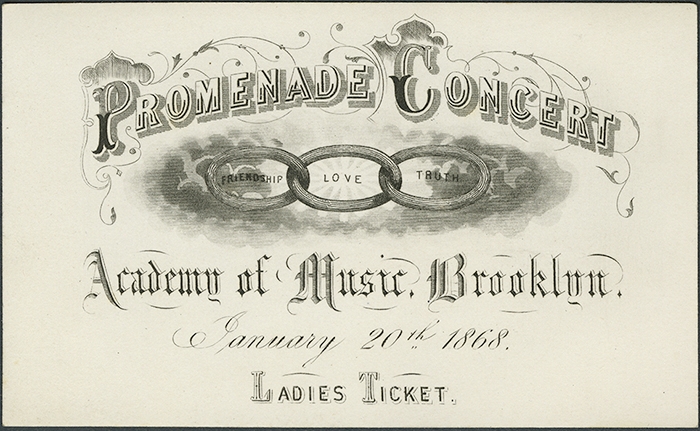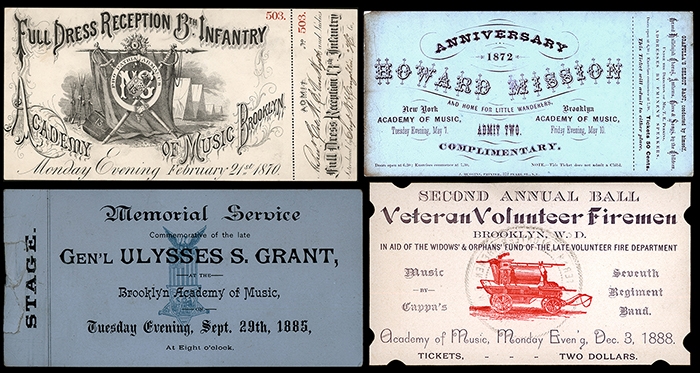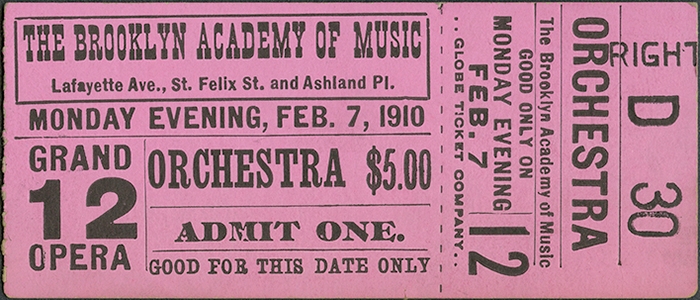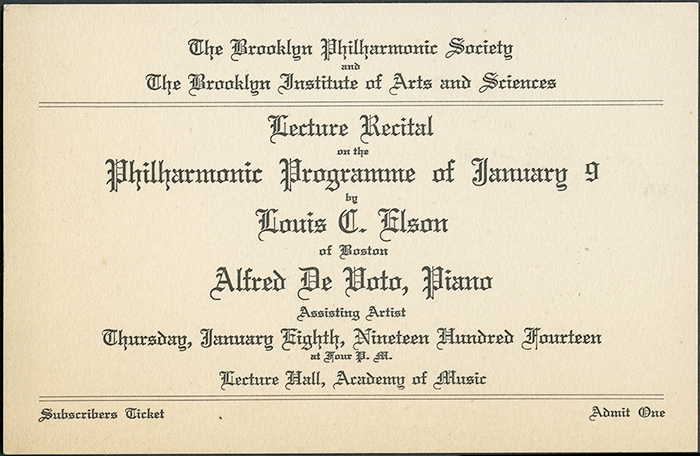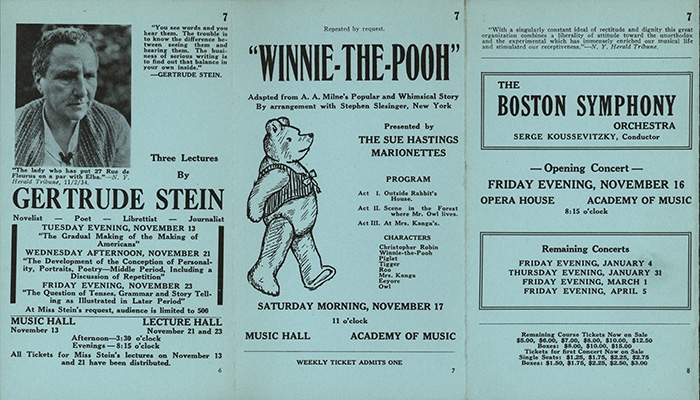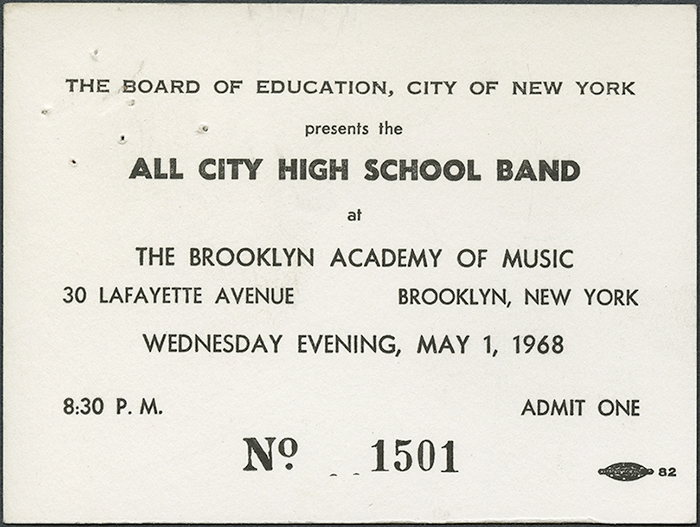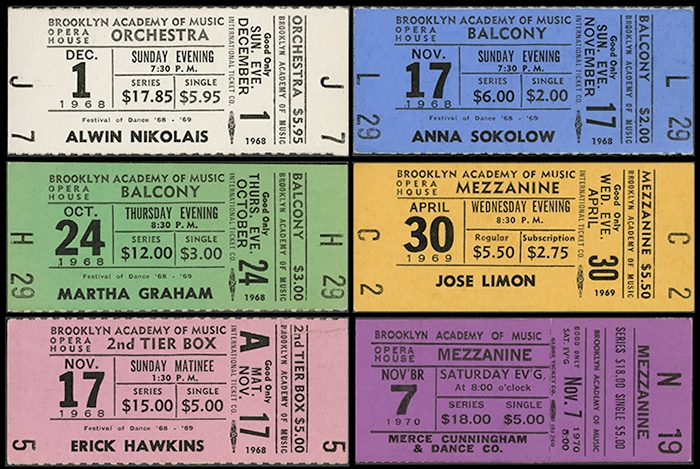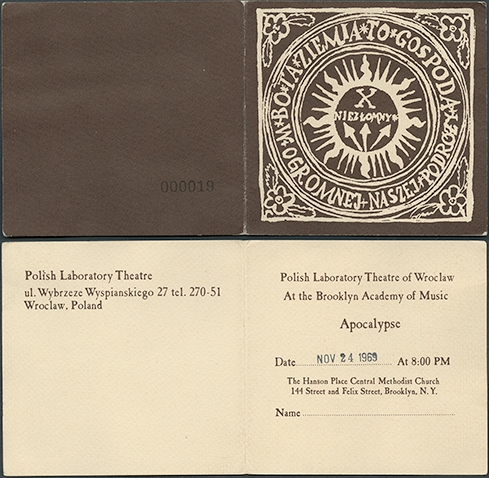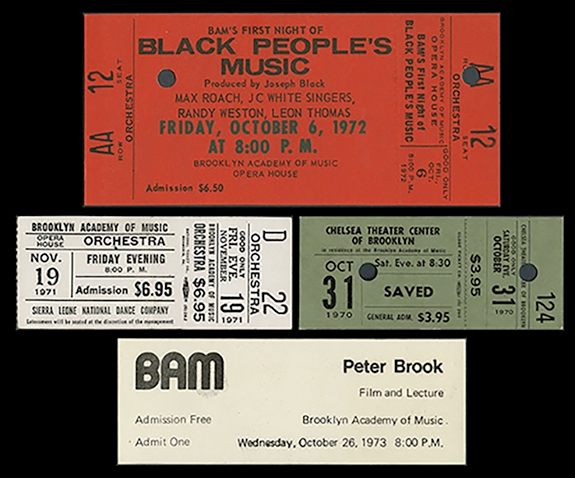BAM through the Years
BAM has presented the brightest talents of international culture, but there is more to BAM than its stages. Since 1861 BAM has fostered the Brooklyn community by serving as common ground where New Yorkers of all backgrounds have assembled.
The Brooklyn Academy of Music (BAM) is America’s oldest performing arts center. Since 1861, it has presented the brightest talents in theater, dance, music, and literature. Today, BAM is a thriving urban arts complex, presenting performing arts, media, and film. It’s also an integral part of the community, providing a welcoming cultural stage and meeting place for New Yorkers of all backgrounds.
The first BAM facility was located at 176-194 Montague Street in Brooklyn Heights. Originally proposed by the Philharmonic Society of Brooklyn as a home for its concerts, the Montague Street building housed a 2,000-seat theater, a smaller concert hall, dressing and chorus rooms, and a vast “baronial” kitchen. It presented both amateur and professional music and theater productions, and hosted the stars of the day, including such notable performers as Ellen Terry, Edwin Booth, Tomas Salvini, and Fritz Kreisler.
On the morning of November 30, 1903, that first building burned to the ground. The New York Times eulogized its achievements: “In short, there has hardly been a great public movement of national import but the old Academy has been at one time or another its principal focus.” Ironically, because the value of the Montague Street site was high, BAM’s stock price rose on the day of the fire. Plans were quickly made to rebuild at the edge of Brooklyn’s business district in the fashionable neighborhood of Fort Greene.
In 1906, the cornerstone for the new building was laid at 30 Lafayette Avenue. A series of opening events were held in the fall of 1908, culminating in a grand gala featuring Geraldine Farrar and Enrico Caruso in a Metropolitan Opera production of Gounod’s Faust. The Met continued to present seasons at the Academy through 1921. During the final Met season Caruso suffered a throat hemorrhage while performing in L’Elisir d’Amore, and coughed blood into several handkerchiefs.
After World War II, Brooklyn experienced the same problems plaguing other urban centers throughout America, and BAM’s audience and support base declined significantly. Forced to search for income in creative ways, the Academy booked language classes and martial arts instruction into performance spaces, and rented space to a boys’ school that held classes in the partitioned grand ballroom. By the time Harvey Lichtenstein was appointed executive director in 1967, the programs and facilities needed rethinking.
Lichtenstein ushered in a new and vibrant era at BAM. During the 32 years he was at the helm, BAM experienced a renaissance, and is now recognized internationally as a preeminent, progressive cultural center. Its facilities feature the Howard Gilman Opera House (2109 seats), the Harvey (874 seats), named in Lichtenstein’s honor at his retirement in 1999, and the Fisher, named for patron and board member Richard B. Fisher. In 1999, Joseph V. Melillo became executive producer, and Karen Brooks Hopkins, president; they were succeeded by David Binder as artistic director and Katy Clark, president, respectively. In 2022 Gina Duncan, former vice president, film and strategic programming, returned to BAM as its president to lead the organization into its next chapter.
BAM’s primary programming consists of the Next Wave Festival—contemporary performance in the fall, and the Winter/Spring season, typically including international opera, theater, dance, and music. It also includes a comprehensive slate of Education & Humanities events, and a variety of community programs. The Lepercq Space houses BAMcafé, a restaurant and live music venue, and the four-screen BAM Rose Cinemas, with one screen dedicated to BAMcinématek's program of repertory and independent film.
